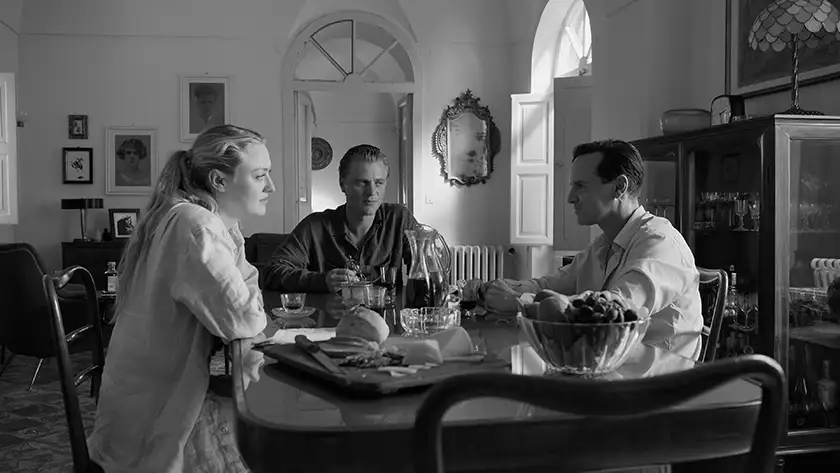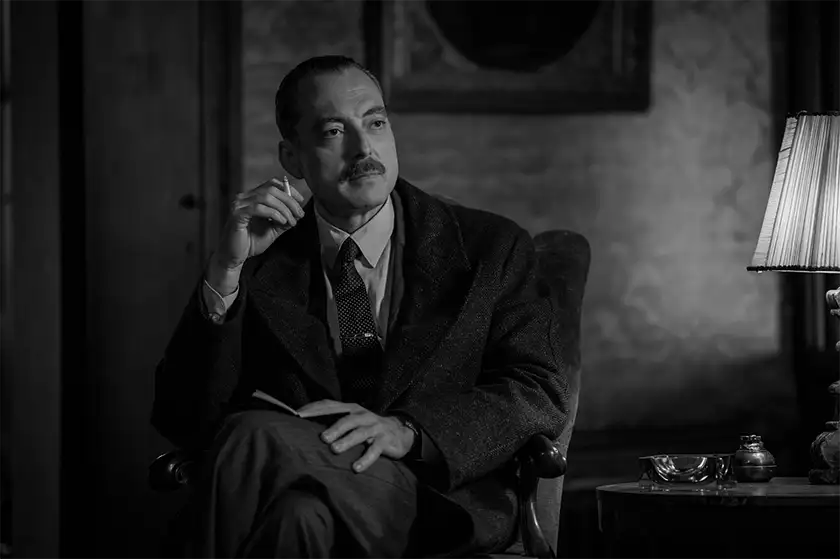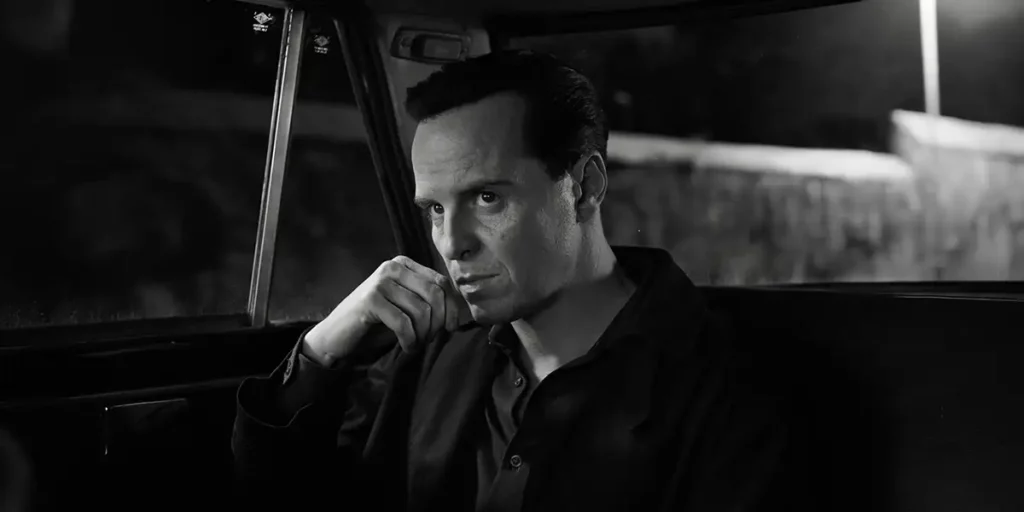Andrew Scott is superb in Netflix series Ripley, which delivers a new version of Thomas Ripley with astonishing world building and attention to detail.
If you’ve seen Andrew Scott in last year’s West End play “Vanya” – a new version of Anton Chekhov’s “Uncle Vanya” where not only did he play every character without even needing a change of clothes, but said characters were often on the stage at the same time, interacting with one another – then you already know why the All of Us Strangers star is the perfect choice to play Thomas Ripley. The new Netflix series is based on Patricia Highsmith’s Tom Ripley novels, and its titular character is someone whose true colors are incredibly hard to grasp, as he often puts on personas based on what he’s trying to achieve at any given time. Scott does this to perfection, but there are even more reasons to love Ripley.
Highsmith’s book series, and particularly its first novel, have already been made into films more than once, and most of these movies were just as popular as the novels. In 1960, Alain Delon brought the character to life in René Clément’s Purple Noon (Plein Soleil); in 1999, Matt Damon reprised the role in Anthony Minghella’s The Talented Mr. Ripley (1999). Ripley has a lot in common with these films, as they all pretty much share the same premise and overall story, but writer-director-producer (and Academy Award winning writer of The Irishman) Steven Zaillian manages to do something new in the Netflix show.
To keep it spoiler-free, Ripley begins in 1960s New York, where a pretty unremarkable grifter named Tom Ripley (Scott) is hired by a wealthy businessman who mistakes him for a friend of his son’s, Richard “Dickie” Greenleaf (Johnny Flynn, of The Outfit and Emma.). Mr. Greenleaf and his wife want Tom to travel to Italy, where Dickie has been staying for a very long time, spending his father’s finances and indulging in his artistic endeavors despite his evident lack of talent. All Tom has to do is convincing Dickie to go home, and Mr. Greenleaf is prepared to pay for all his expenses.
Needless to say, Tom jumps at the chance to make some money, and he’s soon on his way to Atrani, a small town near Naples characterized, it seems, by an abundance of stairs. He finds Dickie right away, and manages to get an invite to stay with him and his girlfriend Marge Sherwood (Dakota Fanning, of The Equalizer 3), though the latter is clearly not so happy not to have Dickie all to herself anymore. But it’s more than that, too. “Everything about Tom is perfectly vague,” we hear her say, later in the show, and she’s not wrong. As the series unfolds and we get more acquainted with its titular character, we soon realize that he’s more interested in earning Dickie’s sympathies than getting him back home. But despite all the time we spend with him, it’s hard to get a grasp of who exactly Tom Ripley is, and the question remains right until the very last episode.

That’s the main difference between Netflix’s Ripley and the novels. Patricia Highsmith’s books revolve around what professor A. W. Eaton calls a “rough hero” in her essay “Robust Immoralism”: a character who does immoral things and who has no redeeming qualities, but whom we can’t help but like due to how the story presents them. Eaton’s examples are Tony Soprano (The Sopranos), Hannibal Lecter (The Silence of the Lambs), Tyler Durden (Fight Club), and more; in her essay, she offers many reasons as to why we like these characters despite their immorality. To me, it’s a lot of things: with some, it’s their charisma; others show us just enough humanity to make us like them despite it all; and then there’s the fact that it’s so very liberating to watch someone do horrible things and get away with it.
With Highsmith’s Tom Ripley, it’s mainly the fact that we can get inside his head, as the writing often gives us insight into his thoughts. Through that, we can see just how “talented” he is at being exactly what the people around him need him to be, how dedicated he is to the success of his ventures, and how much freedom he gains by making up new versions of himself as he goes along. But in Netflix’s Ripley, we don’t get any of that. Our perception of Tom Ripley is pretty much the same as Marge’s – only, unlike her, we know exactly what this “perfectly vague” character has been up to at any given time.
At first, this can be alienating: it’s hard to be invested in a character that we don’t like very much, or to be curious about someone we can’t quite make up our minds about – even more so when said character is much sloppier than he is in the books. At times, he comes across as a calculating mastermind; at others, he’s so emotionless that we wonder what motivates him; and then there are many scenes where it feels he’s just making it all up as he goes along, relying more on improvisation than logic.
On paper, this kind of characterization shouldn’t work, and yet it does, because our eyes are glued to the screen for the entire time. Andrew Scott plays Ripley with cold detachment and a pinch of irony, and even though our perceptions of him keep shifting, there’s something so familiar about Tom and his routine to that it soon becomes impossible to stop watching. The combination of Scott’s performance and the series’ writing somehow allows us to see very few sparks of Tom Ripley’s personality at exactly the right times, and though we don’t exactly like him – and at times, we wouldn’t hate to see him fail – we don’t dislike him either.
As Tom makes all these potentially life-altering choices, the camera lingers on specific objects for just enough time to bring our attention to the details that matter, and that’s another reason why the show works so well. The attention to detail in Ripley is astonishing: there are locations, characters, artwork, animals, and even objects we come across in the first episodes that return when we least expect them to, making us feel as if Tom’s world was partly our own, too. And the world building itself feels so authentic that it makes one wonder how long it must have taken to make it all come to life: at times, there is so much to take in in one single frame, and even if not all of it is essential to the story, it makes the show so much more immersive and alluring.
There are places that Tom visits quite regularly that become so familiar to us, from the newsstand where he gets his paper to the many houses and hotels where he stays throughout the series and even the records he buys, and they’re all drenched in Italian culture in the most realistic way possible. From the language to the customs to small details like the look of Lire at the time, nothing has been left to chance, and this, combined with the gorgeous black and white cinematography (Robert Elswit), haunting score (Jeff Russo), and the use of songs that defined an era, make it so effortless to inhabit Ripley‘s world.

Joining Scott are many talented actors who all excel in the show, from Johnny Flynn as Dickie and Dakota Fanning as Marge – the latter gives us a masterclass in acting in the finale – to Maurizio Lombardi (The New Pope) as Inspector Pietro Ravini, Margherita Buy as cat-loving landlady Signora Buffi, and many more Italian and International stars who are bound to make an impression regardless of how much screen time they have. There are also a few familiar faces you’ll be surprised to find in the series, including one in the finale that improves the show the moment he enters the frame, making us extremely curious and getting our hopes up for a second season.
Patricia Highsmith’s novels – and “The Talented Mr. Ripley,” in particular – have been adapted for the screen many times, and the story itself is so popular that it’s hard to find anyone who doesn’t know that a twist is coming. This certainly affects our experience watching the show, and it doesn’t help that the series as a whole feels very long, and there are a few episodes in particular where I was a little bored. On top of this, there are some gags that don’t really work, and also a couple of puzzling aesthetic decisions, such as the choice to have the color red appear in one particular shot in an otherwise black and white series.
As I was watching Ripley, I couldn’t make up my mind on whether or not I liked the show, or even what I thought of its titular character. One episode after the other, my opinion kept changing, until I found myself hypnotized by its world building and storytelling; by the time I reached the finale, I desperately craved more time in Ripley’s world. Despite its flaws, Ripley absolutely works, due to the combination of superb acting, highly immersive world building, and a screenplay that is faithful to its source material while, at the same time, renewing it. Here’s hoping it’s renewed for Season 2!
Ripley will be released globally on Netflix on April 4, 2024. Read the Tom Ripley Novels: The Talented Mr Ripley, Ripley Under Ground, Ripley’s Game, The Boy Who Followed Ripley, and Ripley Under Water.

